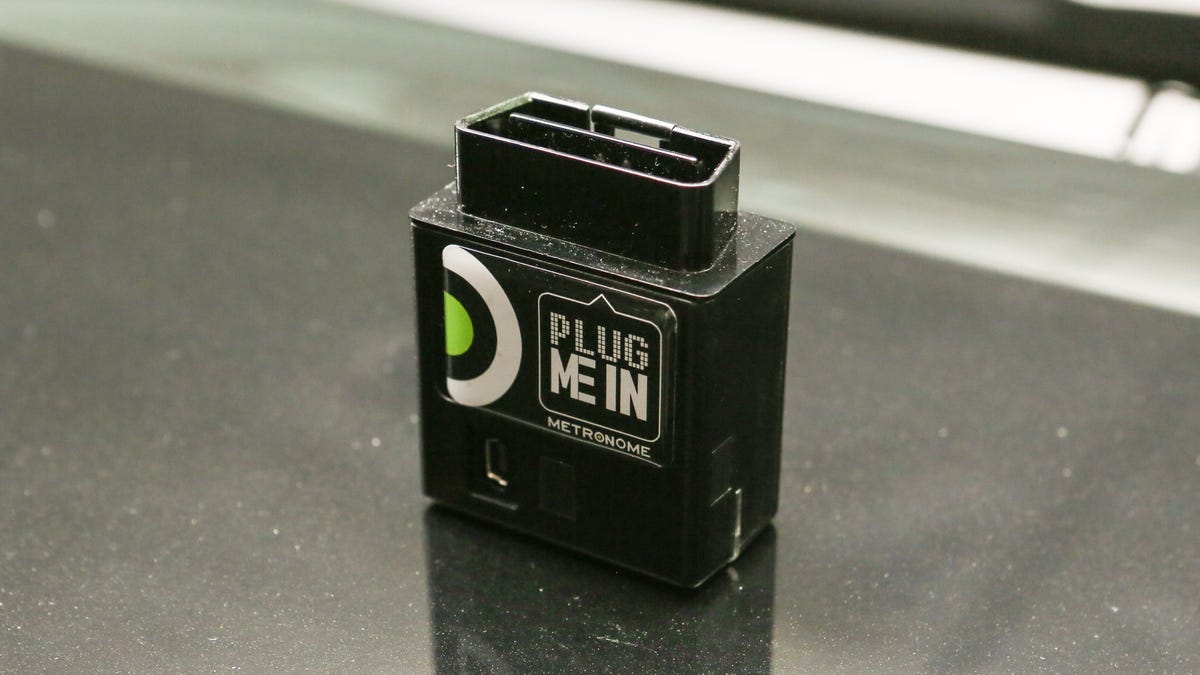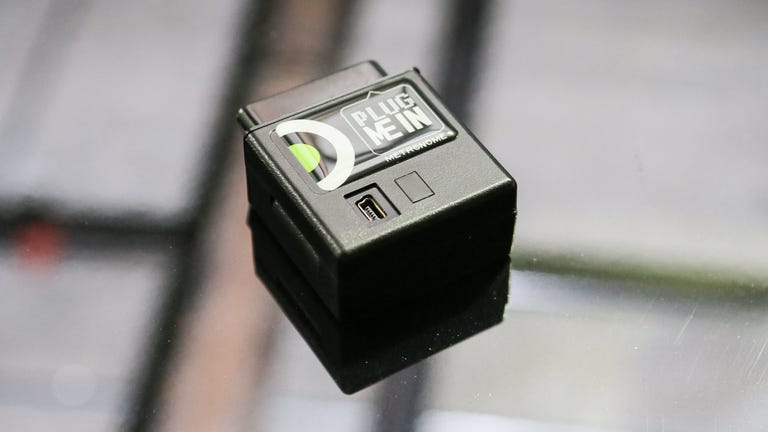 Why You Can Trust CNET
Why You Can Trust CNET Metronome by MetroMile review: Free Metronome records trip data, enables per-mile car insurance
Free Metronome records trip data, enables per-mile car insurance
Traditionally, insurers calculate car insurance rates based on complex risk tables, taking into account driver age, driving history, home location, and a rough prediction of the miles driven each year. Under this system, you could leave your car parked for a month and pay the same rate as if you drove it every day.
The Good
The Bad
The Bottom Line
MetroMile's business model introduces more precise risk evaluation to its insurance package with the Metronome device. However, you don't need to order insurance from MetroMile to get the Metronome -- the company offers the device, which helps you save gas and find your parking spot, for free.
Recently there has been a glut of OBD-II devices that help track your car, alert you when your kids drive too fast, and offer fuel efficiency coaching. At CNET, we have reviewed the Automatic , Zubie , Audiovox Car Connection , and Vehicle Diagnostics by Delphi . Most read diagnostic information from a car's OBD-II port, track the car's location through GPS, and send data to a server via a cell tower connection.

The Metronome works through similar technology, but the business plan behind it is very different. Most of the other devices require a data subscription fee, but MetroMile is funding the devices through its insurance product. Currently, the device works only in California, Washington, Oregon, and Illinois, while MetroMile's insurance is available only in Washington, Oregon, and Illinois. Depending on MetroMile's success, it will roll out the device and insurance plans in more states as it negotiates insurance coverage in compliance with each states' laws.
A MetroMile representative told me that insurance plans begin at a base rate of $20 to $45 per month, plus 2 to 5 cents per mile. Along with insurance, that includes roadside assistance. More information is available on the MetroMile Web site.
MetroMile insists that it does not take into account driving behavior, such as hard braking or acceleration, that can be recorded by OBD-II devices when it calculates the monthly insurance bill.
From my reviews of other OBD-II devices, the Metronome looked very familiar. It is a little block of plastic with an OBD-II plug on one end. A white status light sits on one side. I happened also to be reviewing a 2014 Toyota Highlander , so plugged the device into its port to record some miles.
As the Metronome device sticks out almost 2 inches from the plug port, it might not be a good fit in all cars. In the Highlander, it fit up under the dash, out of the way and pretty much hidden, but in my own BMW Z3, it would stick out into the passenger footwell. I should also note that OBD-II ports only became mandated in cars from 1996 on, so the Metronome won't work in older vehicles.
I had also loaded the MetroMile app on my iPhone. The company provided an account linking the phone to the device. After plugging the Metronome into the Highlander, I drove for a couple of miles to let the device establish its data connection and get a GPS fix. Opening the app, it showed the path I had driven and recorded the number of miles, how long it took, average fuel economy, and fuel cost.
After driving further, I opened the app again and saw the route I covered on a map. The app listed each trip I took, breaking it up at each of my stops. I could view my entire route for a specific day or each individual driving segment. Likewise, for each segment I could view driving time, fuel economy, and fuel cost. Another screen summarized those data points for each month.
As the app showed the last spot where I stopped the car, I could zoom in on the map to see where I had parked. However, there is no routing function in the app, so it can't tell me how to get to my car. It also can't port these locations over to other map apps on the phone. MetroMile says it is adding a feature to the app that will alert you if your car is parked in a street-sweeping time and zone. That feature will initially only work in San Francisco.
Logging into MetroMile's Web site let me view my trips and driving data in a larger format and even replay trip progress. The Web interface would be helpful for putting data into a personal budgeting program, except for the fact that it does not include an export function for driving data. I also did not see any means of entering the per-gallon price for each time I refueled. Without that data, MetroMile's fuel cost budgeting is only an approximation.
Compared to other OBD-II devices, there are a lot of things the Metronome does not do. While it showed how much fuel I used, there was no driving coach function, helping me drive more efficiently. If I were a parent and let my kid use the car, I could see where it was driven, but Metronome does not have any active alerts for driving behavior or geo-fencing.
The app includes a car maintenance tab, but that merely shows whether the check engine light has come on. Metronome does not provide any detailed car diagnostic information.
Ultimately, I was impressed by how easy it was to get the Metronome plugged in and set up with the app and MetroMile system. The app graphics also look good and modern. The lack of features compared to other devices would normally put it low on my list. However, it is hard to argue with "free."
Obviously, MetroMile offers the Metronome as a kind of hook to get you to at least think about signing up for its insurance plan. Mile-based insurance will be appealing for many and could result in savings over existing insurance plans, depending on the individual situation. I know some people will be concerned about privacy, but if you carry a smartphone, that horse has already left the stable.


